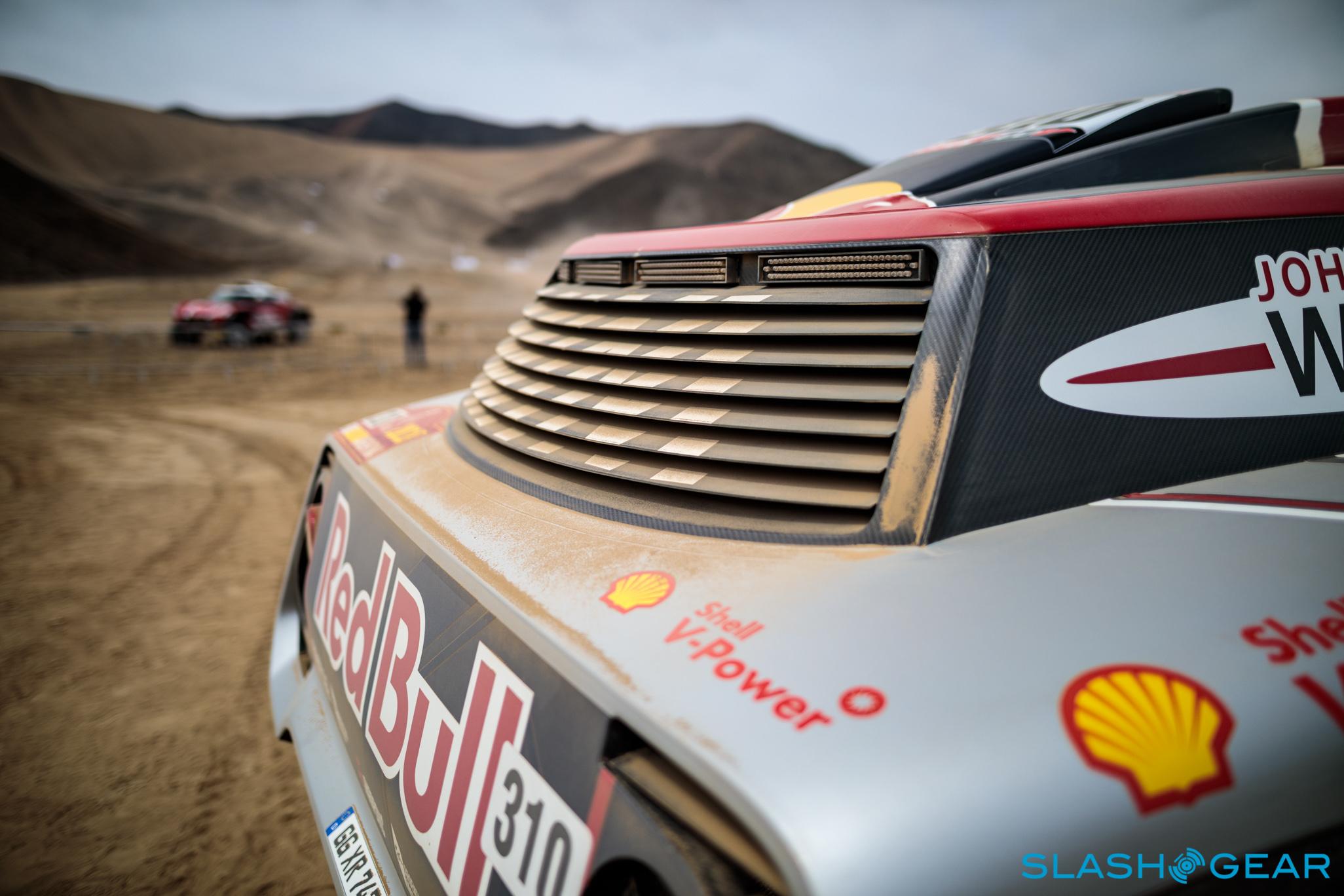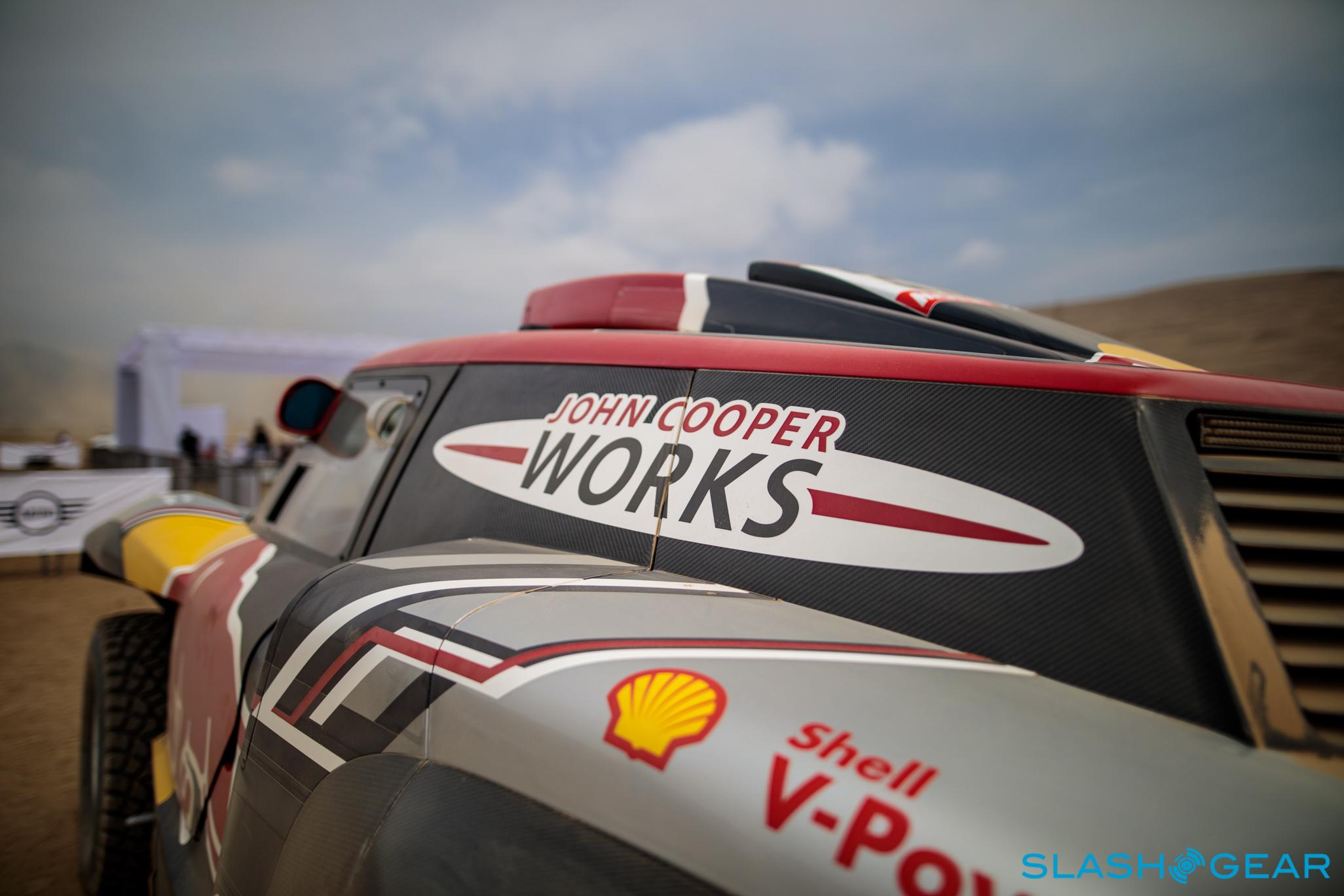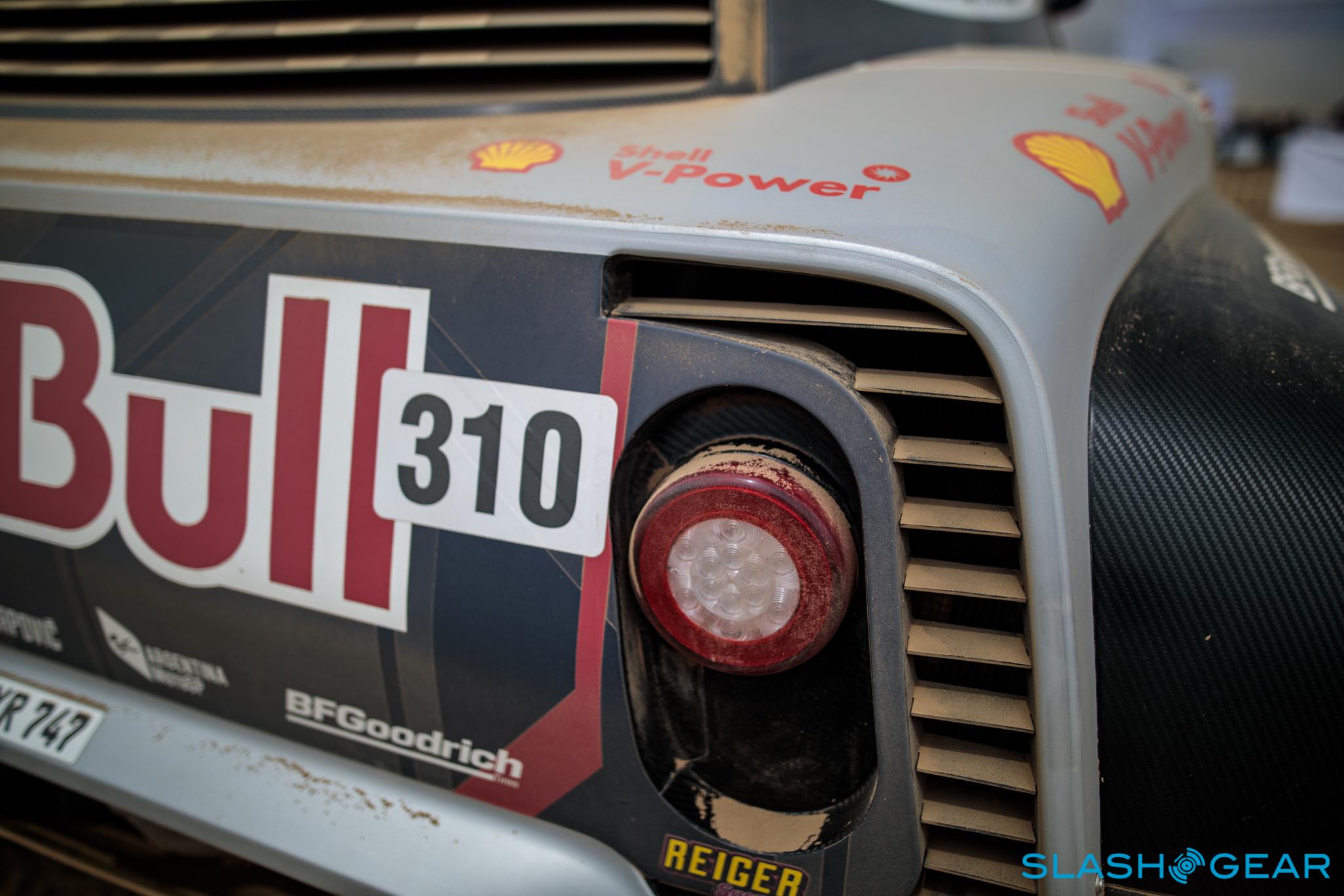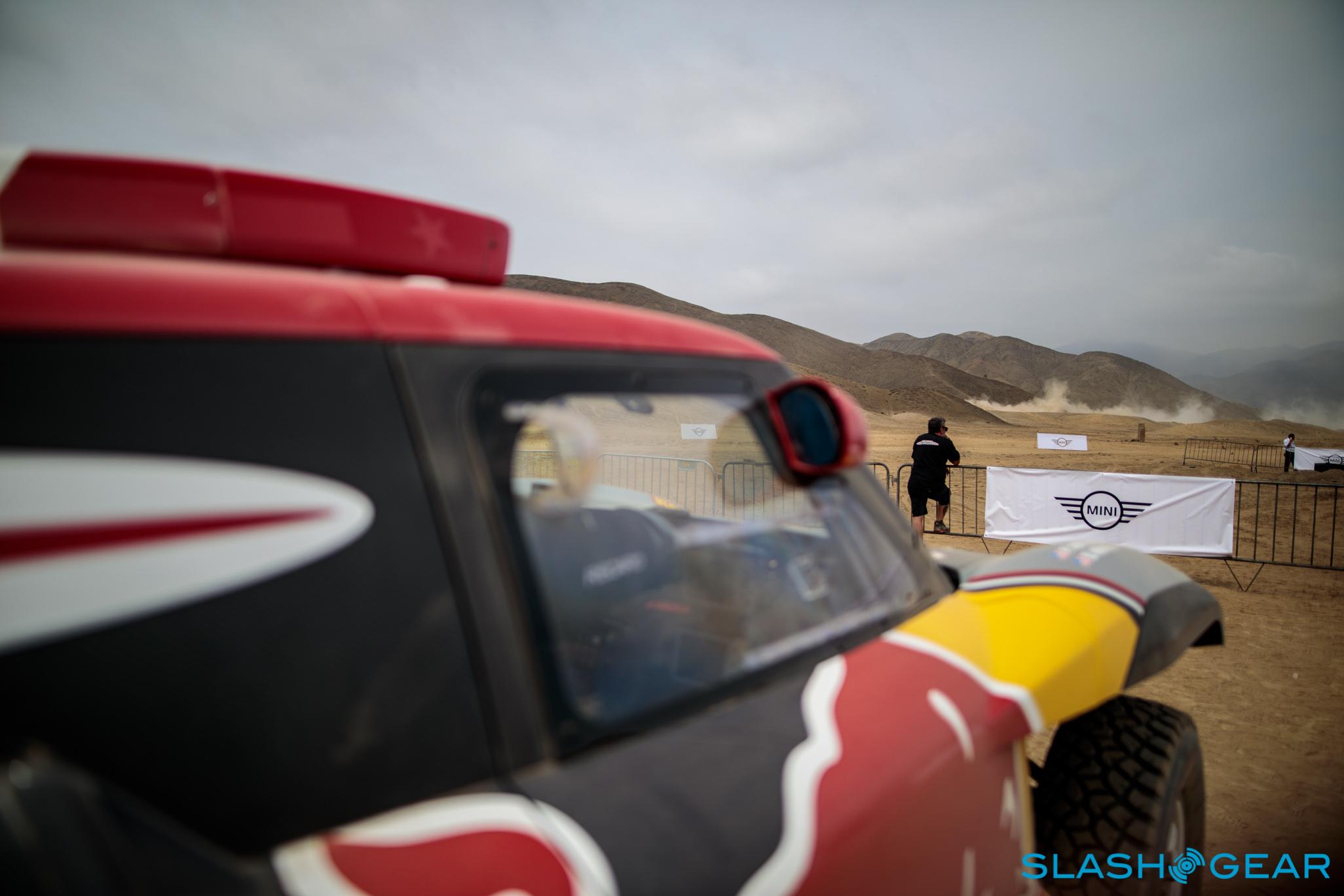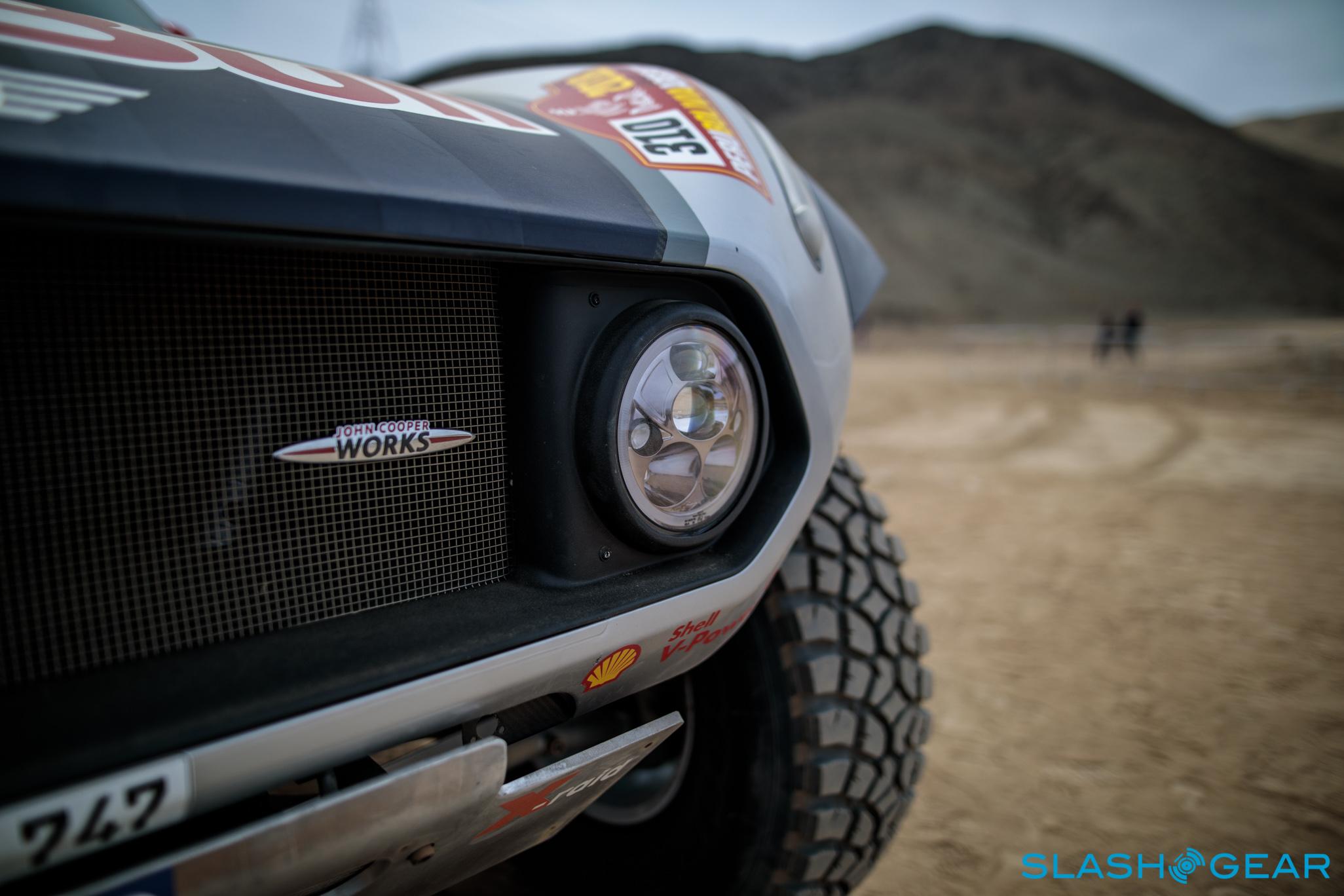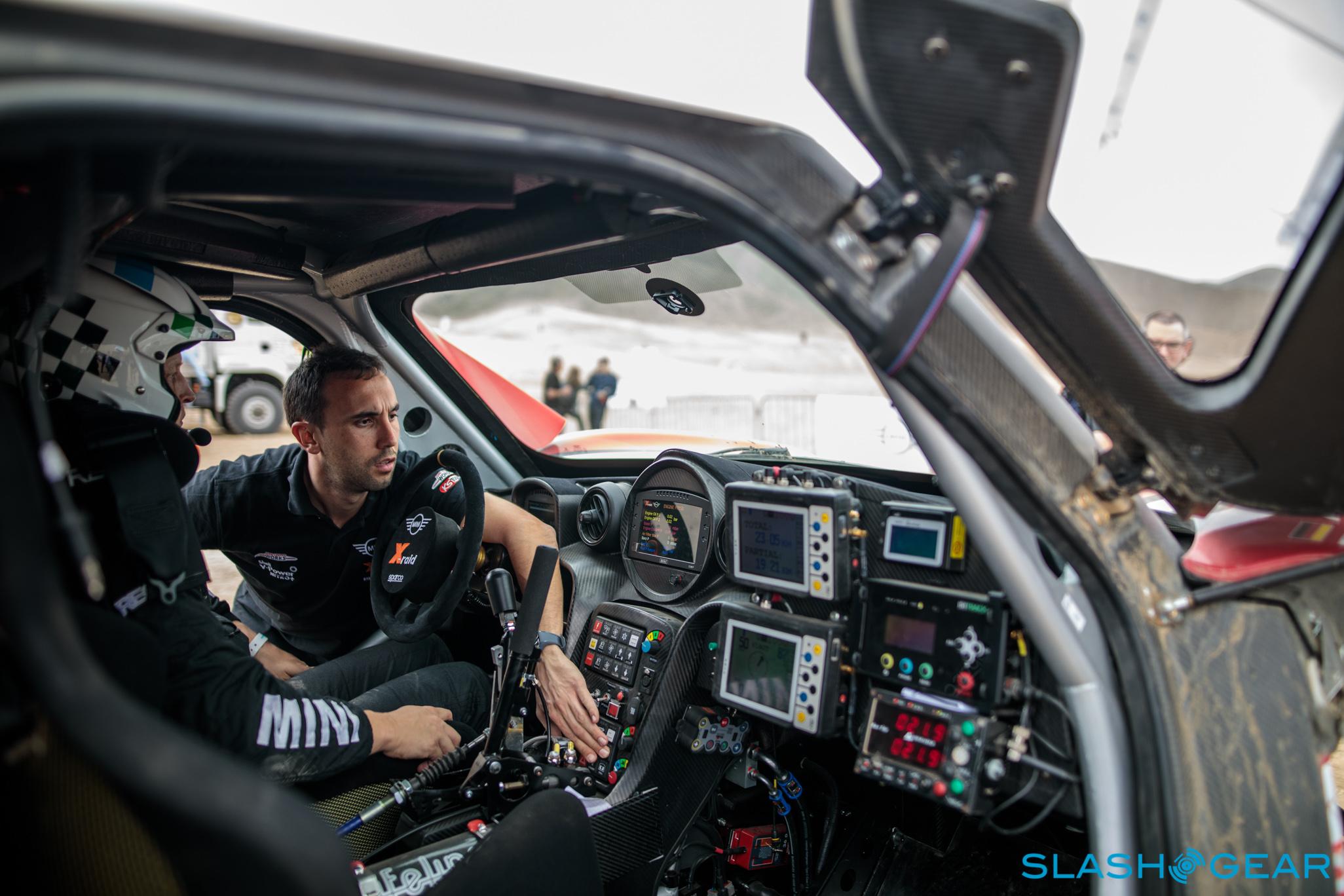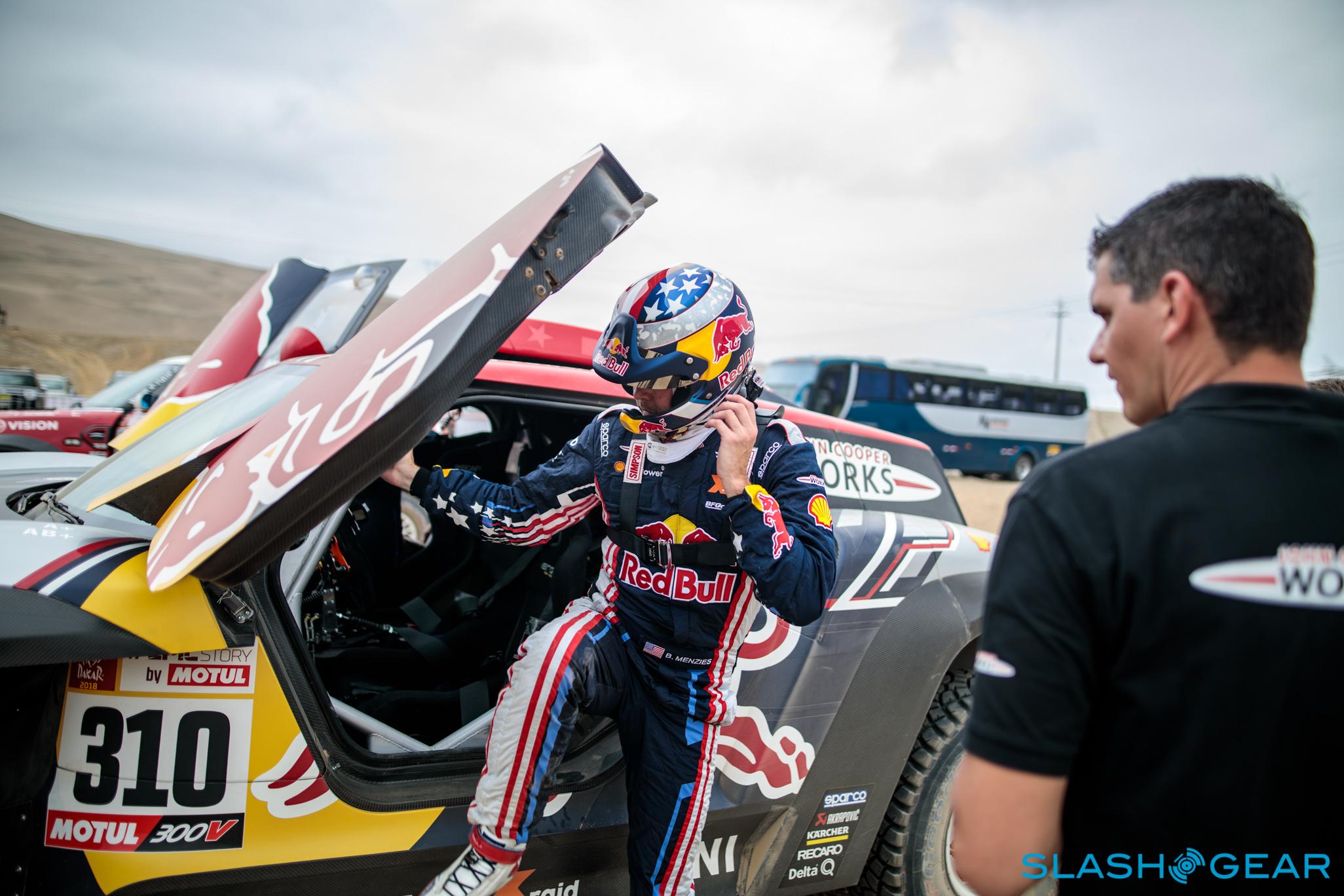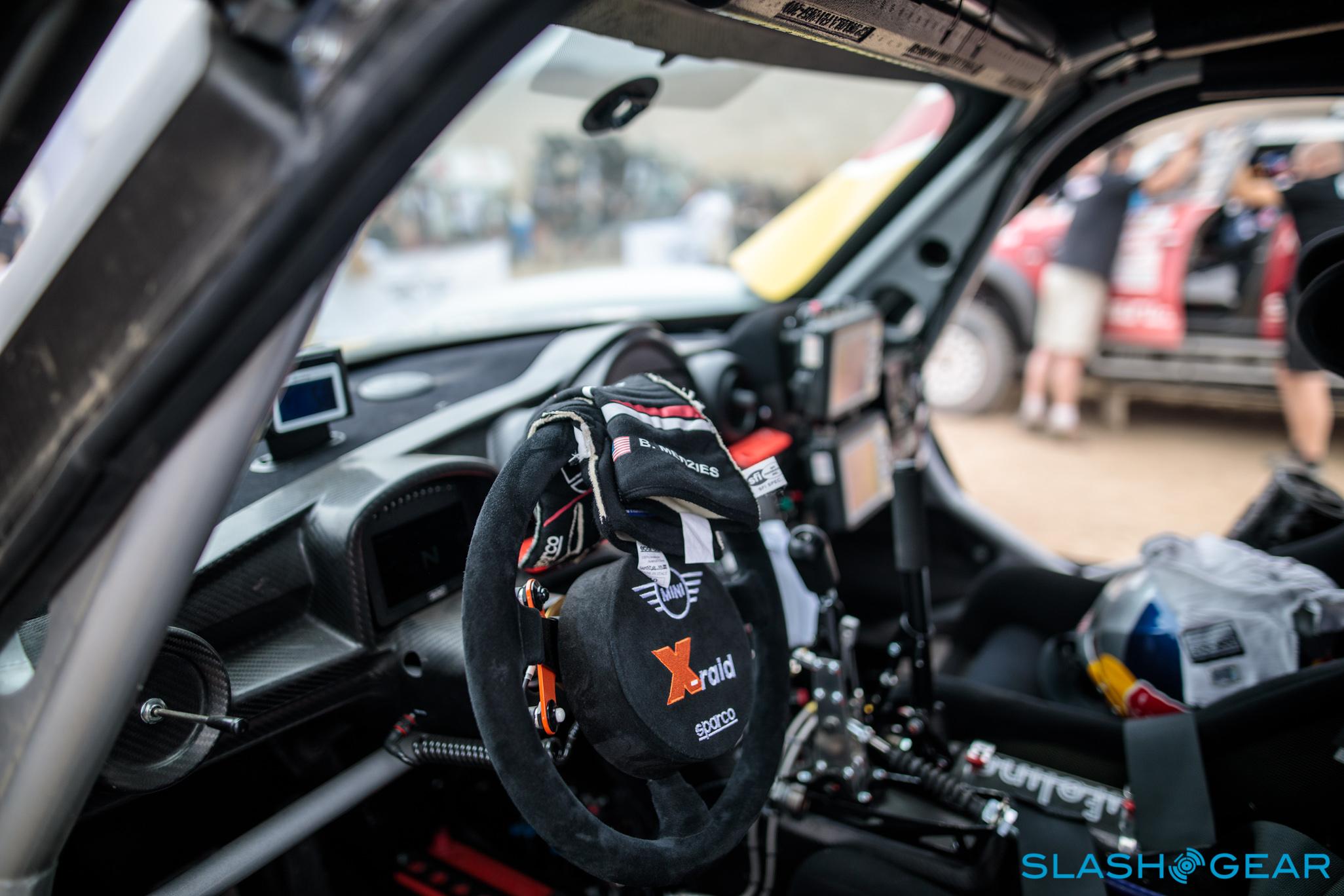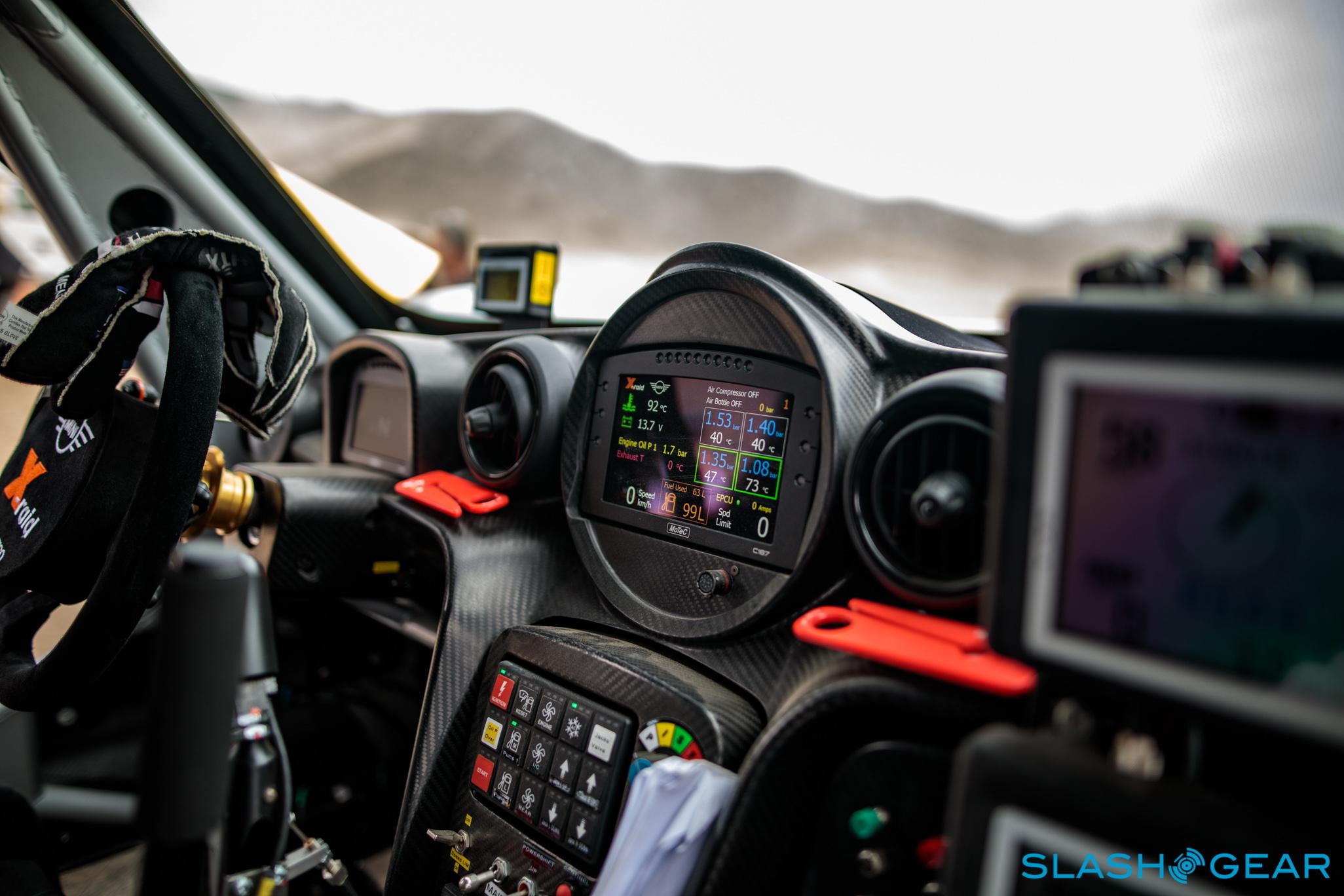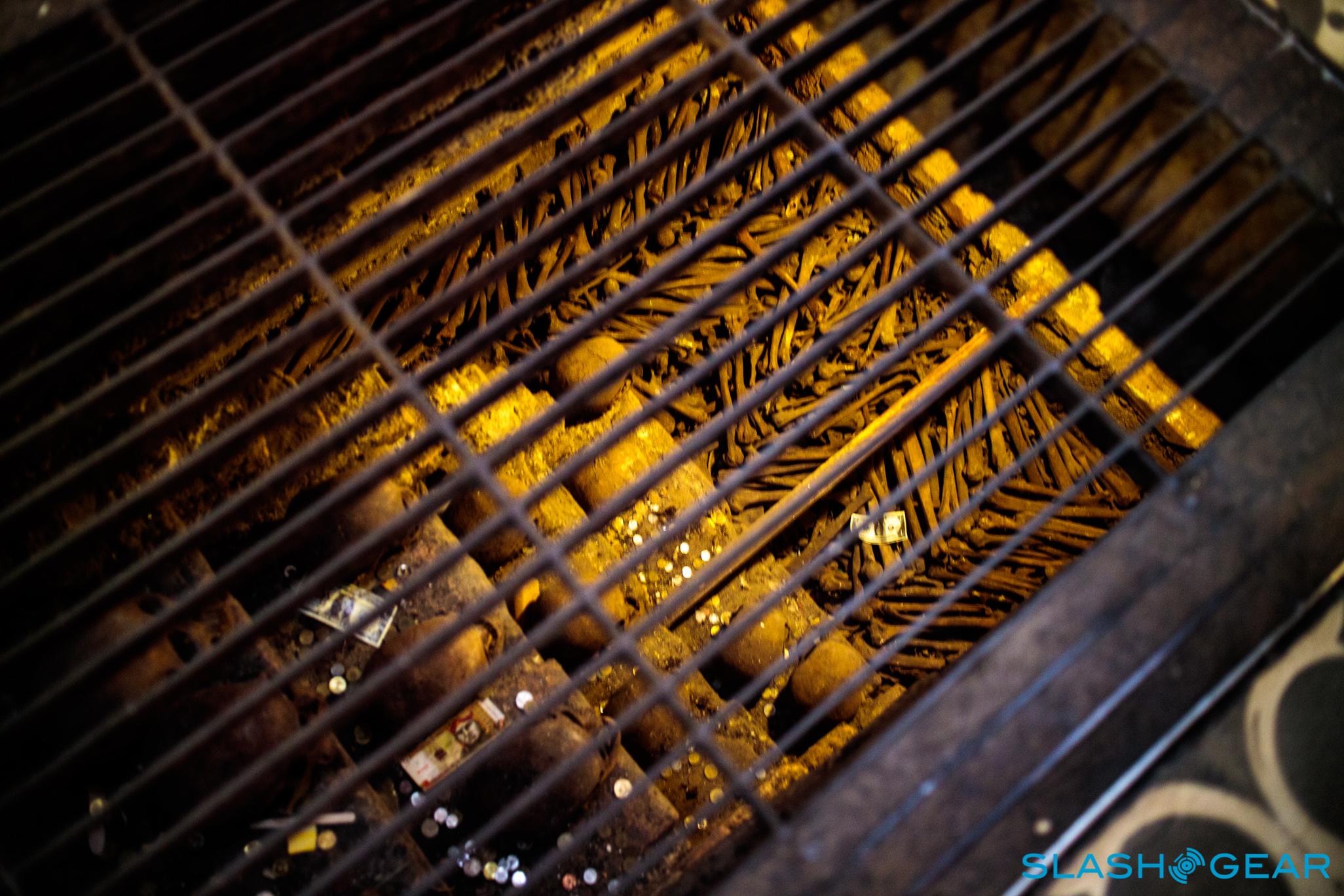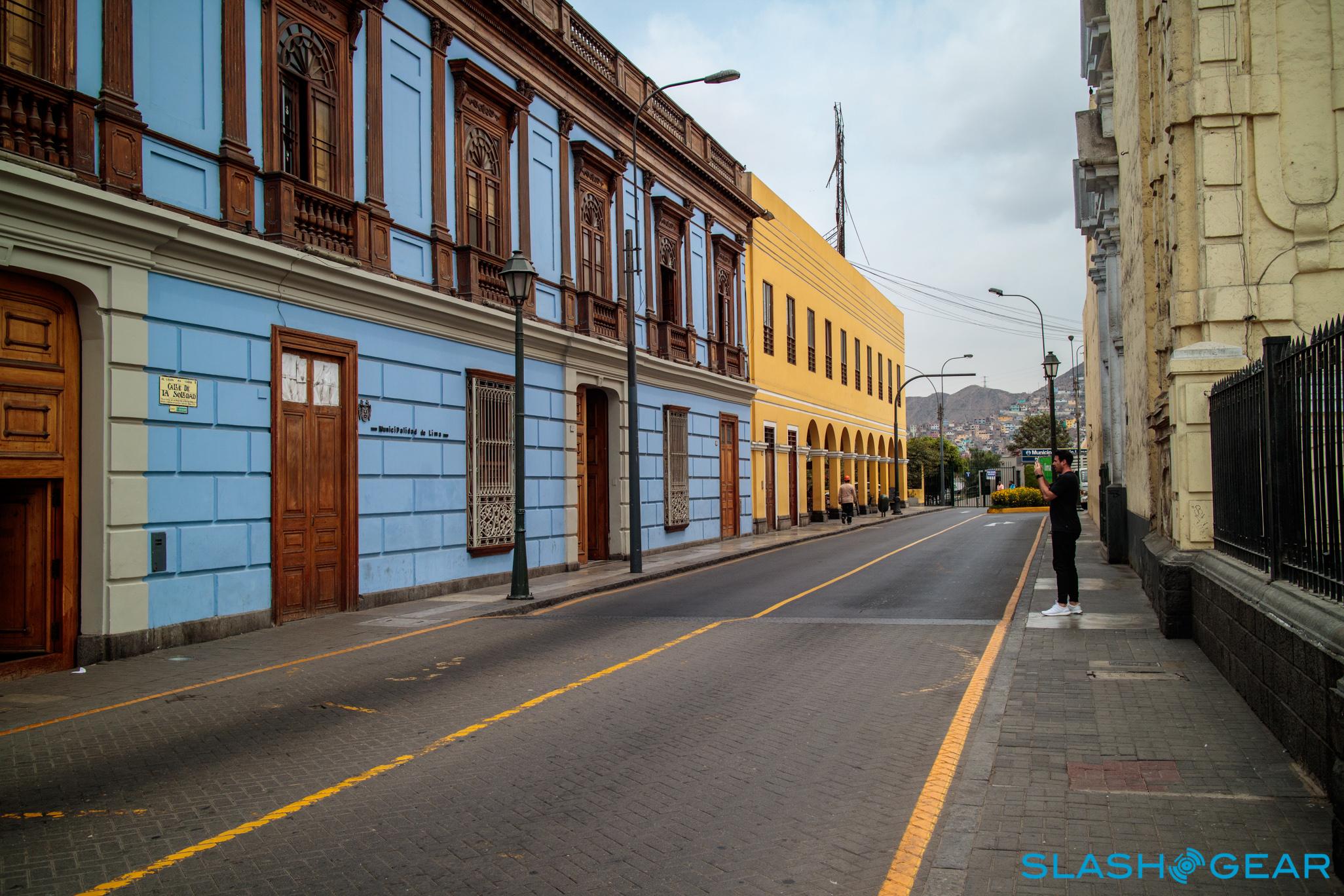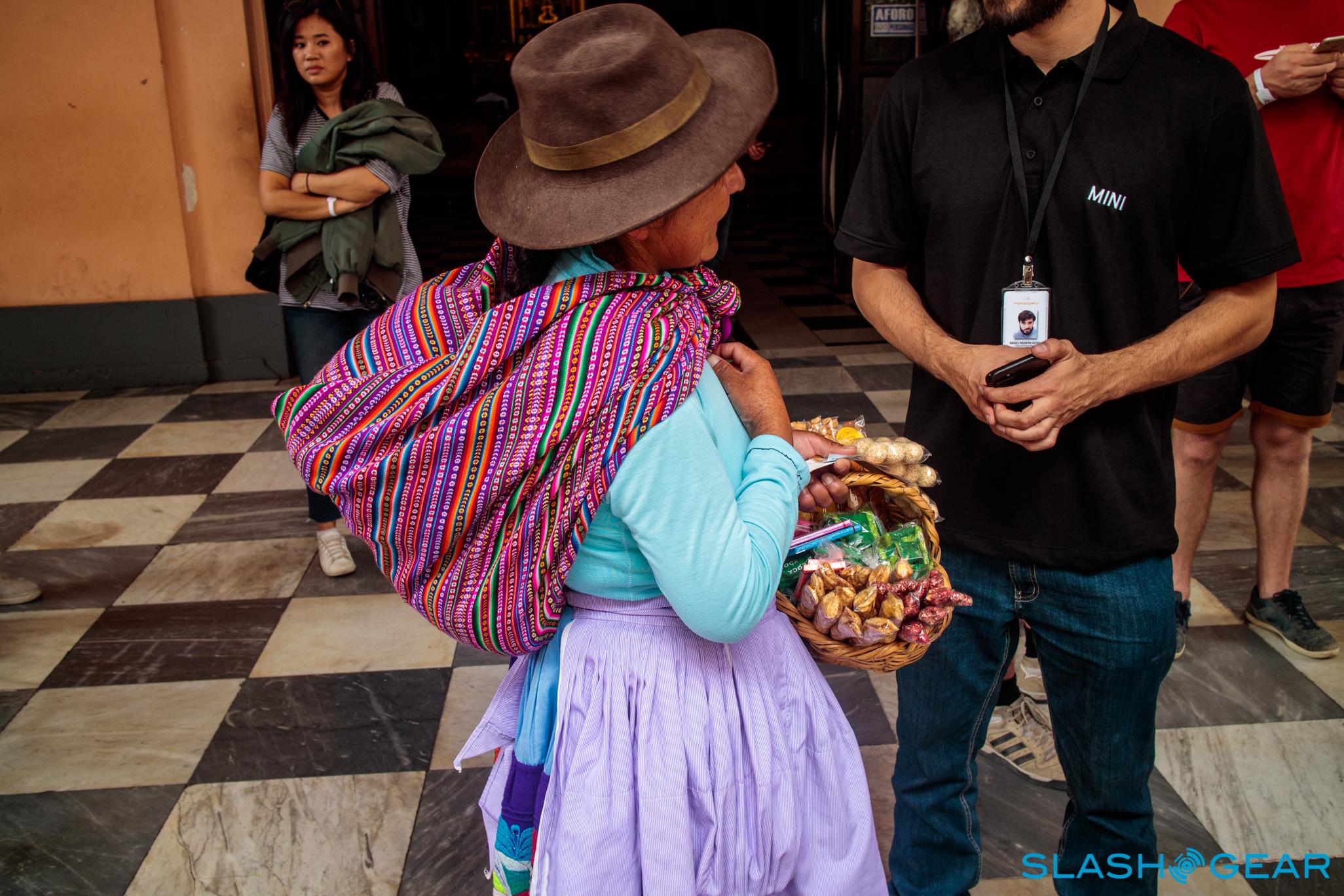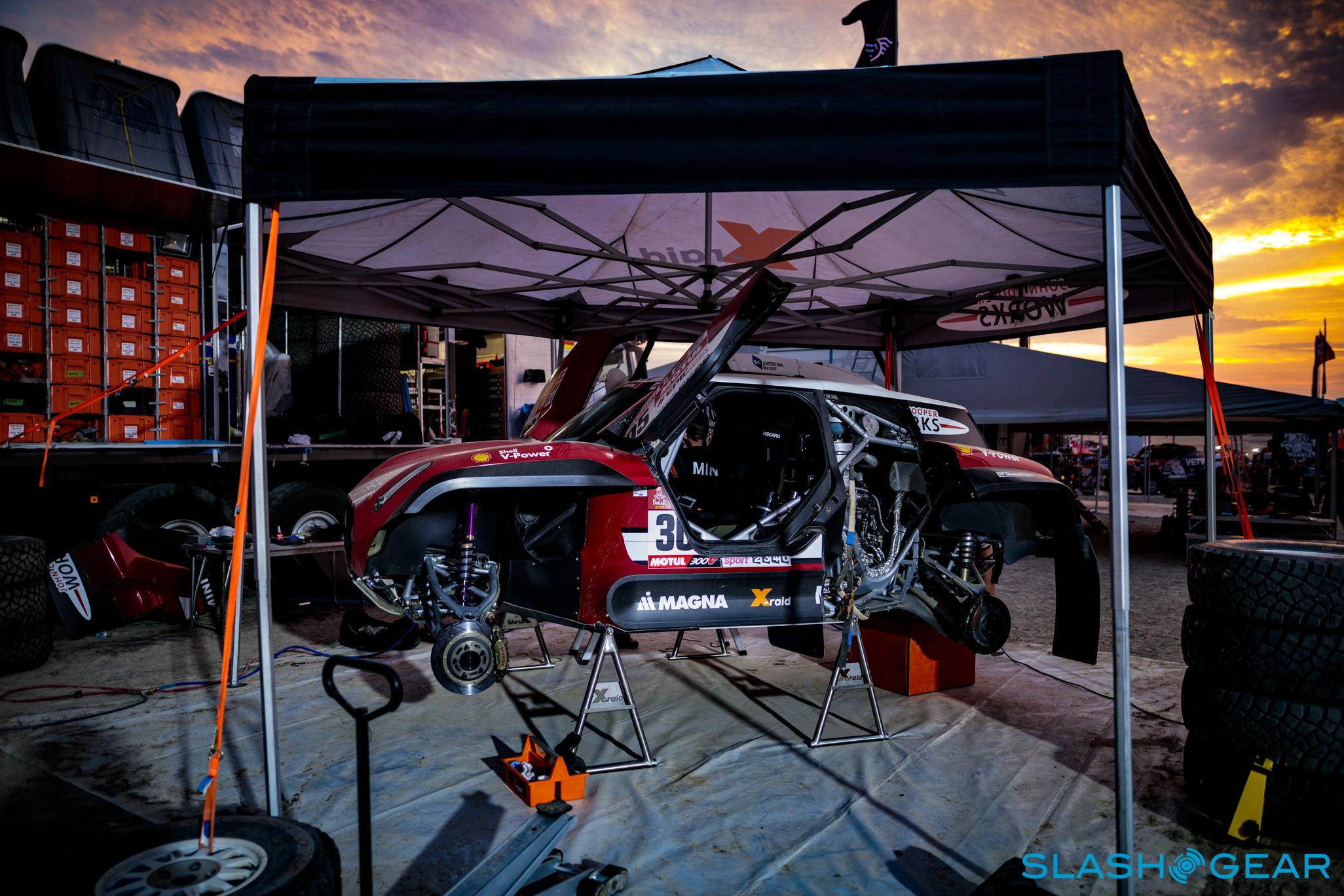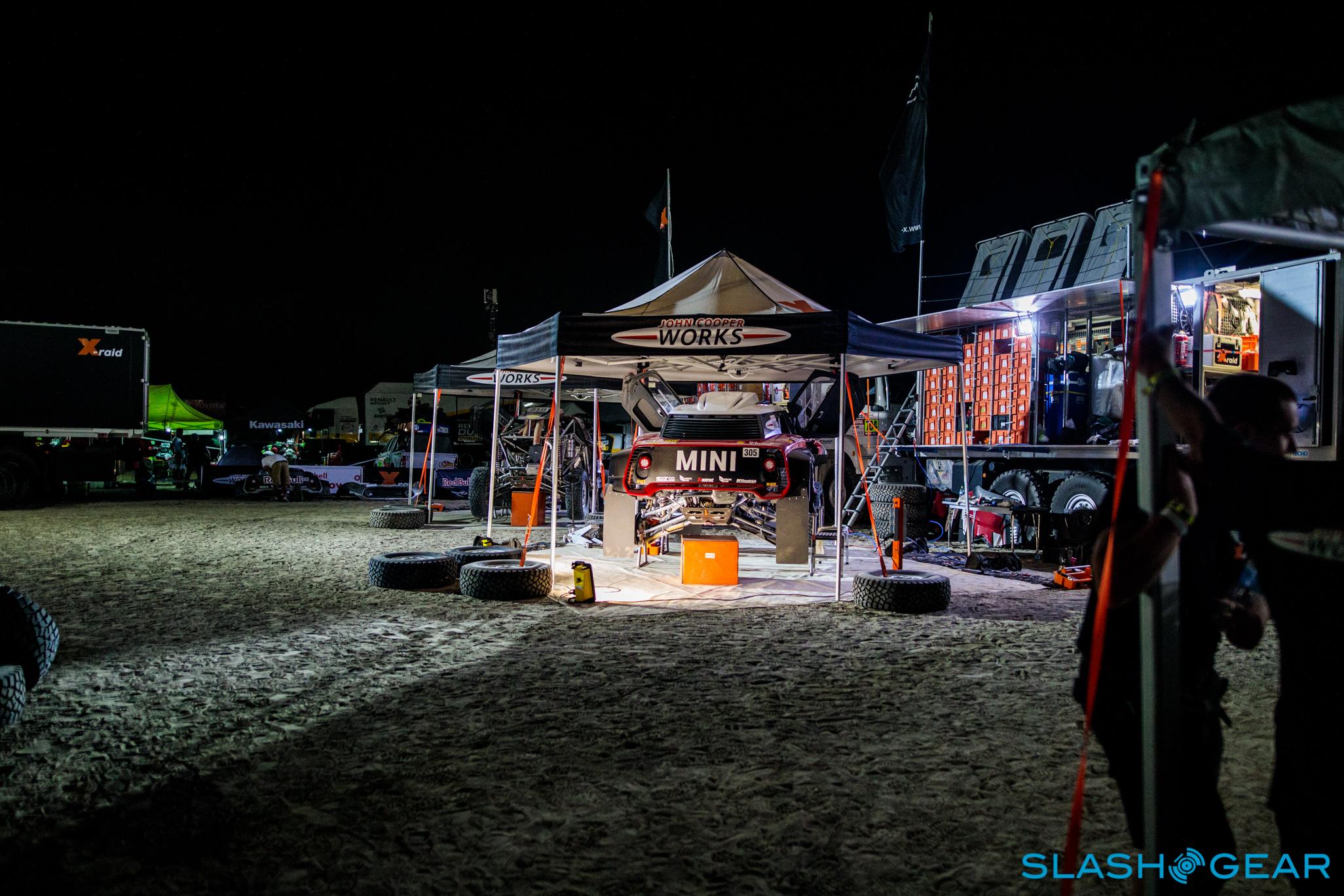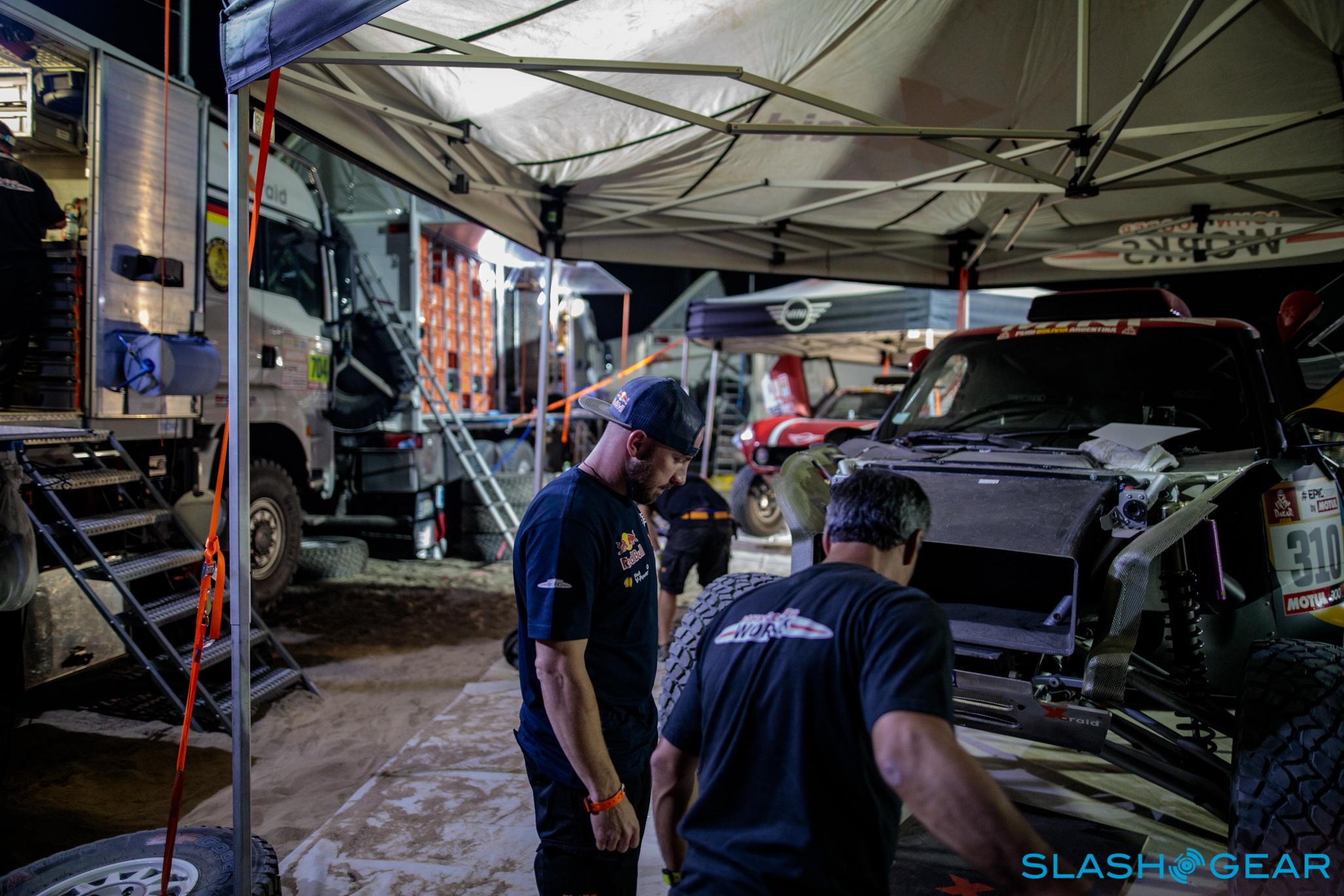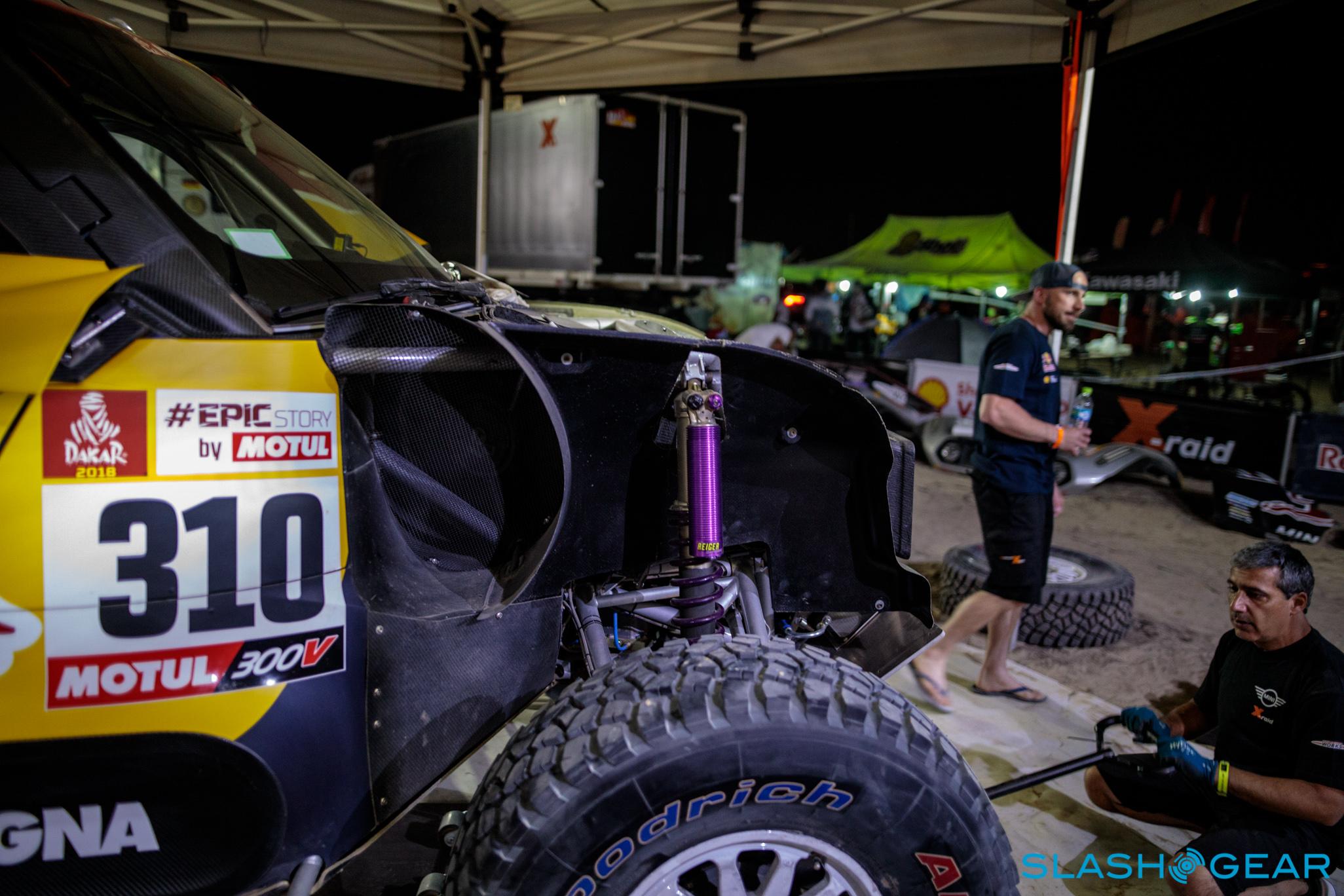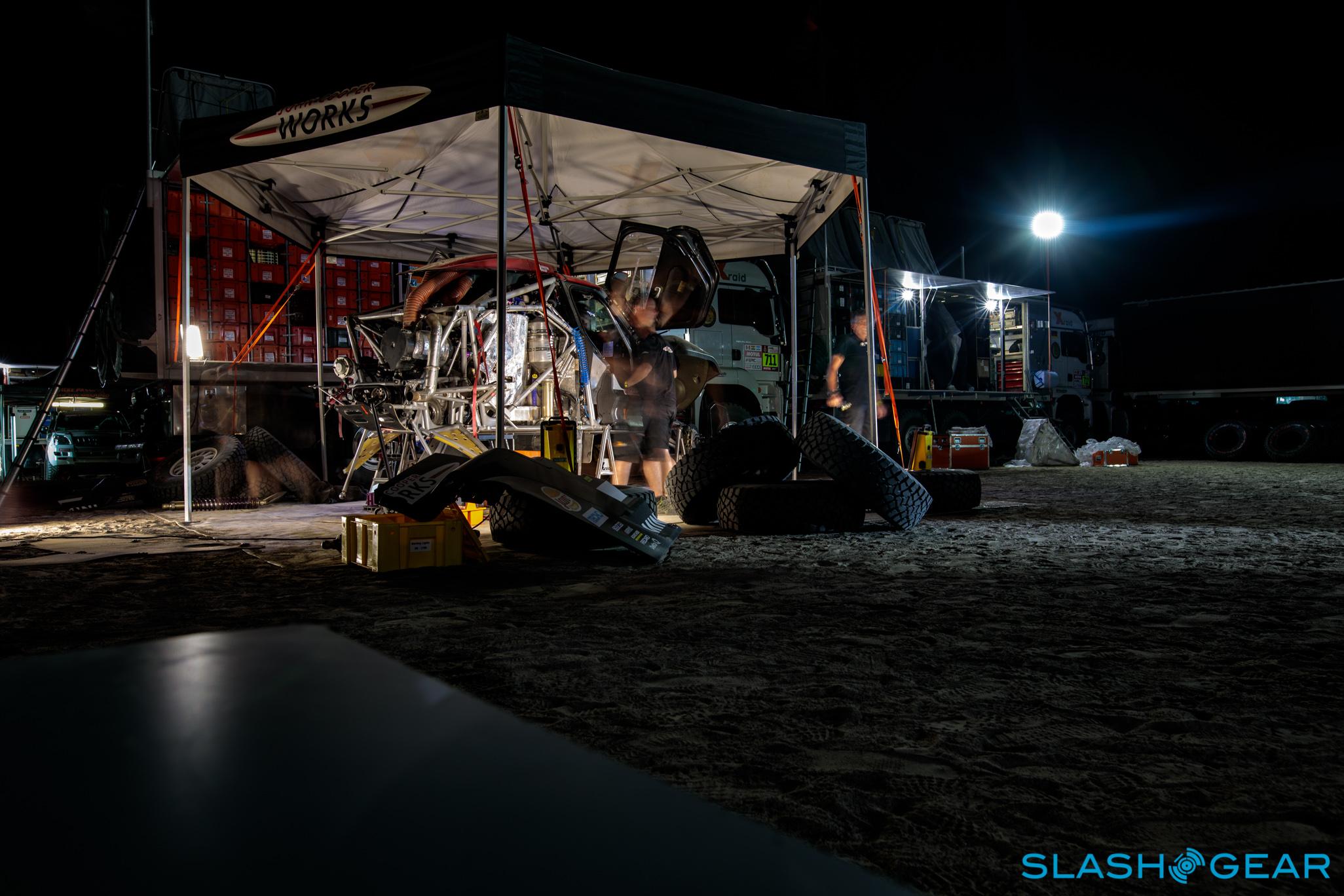Inside Dakar 2018: Earth's Toughest Race
You figure out your packing priorities pretty quickly when you're given a week's notice that you're shipping out to Lima, Peru. My Dakar journey started in Boston, and this would be my first trip to South America: I had seven days to prepare to face the desert. The invite was suitably vague, just the basics that I'd be spending the night sleeping in tents in the desert a few hours from a major city. Time to cross another item off my motorsports bucket list.
A few years ago I struck the 24 Hours of Le Mans from that list, and now it was time to cross off Dakar, too. My host was BMW MINI, and it was shaping up to be a big year for the automaker too. For Dakar 2018 they'd be launching their new MINI John Cooper Works Buggy, while two Americans – Bryce Menzies and Pete Mortensen – would be driving and navigating one of the seven entries.
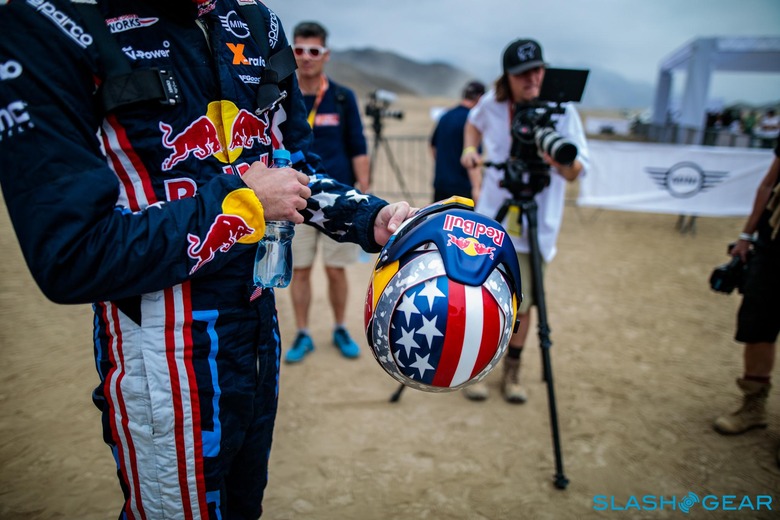
Thierry Sabine, a wealthy adventurer and founder of the Paris to Dakar Rally, had the idea for the challenge in typical explorer fashion: he got lost in the Ténéré desert in 1977, while competing in the Abidjan-Nice rally on a motorbike. Sabine would go on to brand his creation "a challenge for those who go, a dream for those who are behind." On December 26, 1978, that dream was realized when 182 motorbikes and cars left from Trocadero Square, Paris and headed south to Dakar, Senegal to start the first edition of the Paris to Dakar Rally.
For the participants, the thrill of the pure adventure involved in covering 10,000 kilometers (6,200 mi) with no satellites or technology to guide them was immeasurable. Only 74 vehicles would finish the rally that year. The race's popularity quickly grew in 1980, when 216 motorbikes and cars would start, a number that would increase to 291 in 1981. The length of the course would also vary with each year, at its longest being 16,000 kilometers (9,941 miles).
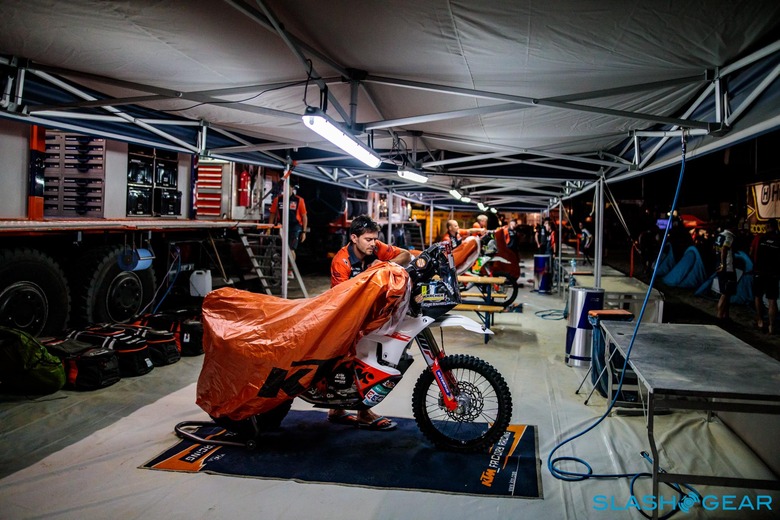
In 2018, the 40th Dakar covered three countries and returned to Peru for the first time in five years. Fourteen stages would take competitors 9,000 km (5,592 miles) through Peru, Bolivia, and finally finishing up in Argentina. The only thing as diverse as the countryside is the vehicles that attempt to conquer it. 515 competitors and 332 vehicles will start from Lima, Peru and – with sand, mud, and mountains in-between – most will not make it to the finish line in Cordoba, Argentina. Of that 332, the line-up consisted of 92 cars, 11 UTVs, 139 motorbikes, 49 quads and 44 trucks. Oh, and an additional 2,800 people ranging from race organizers to team support staff.
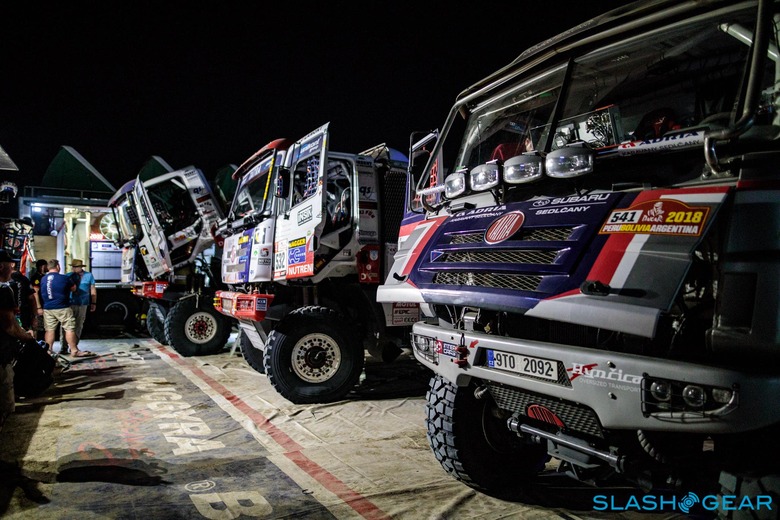
Back in 1981, Hubert Auriol clinched the first BMW victory in Dakar on his R80G/S motorbike. Since then, BMW has a long history of participating in the race. Starting in 2011, the X-RAID team in partnership with BMW MINI introduced the MINI All 4 Racing. X-RAID is a German racing team owned by Sven Quandt, whose family is a majority shareholder of BMW and is the official BMW team for the Dakar Rally. With nothing short of a podium finish in mind, the MINI All 4 Racing was specifically designed to take part in rally raids, culminating in winning at Dakar.
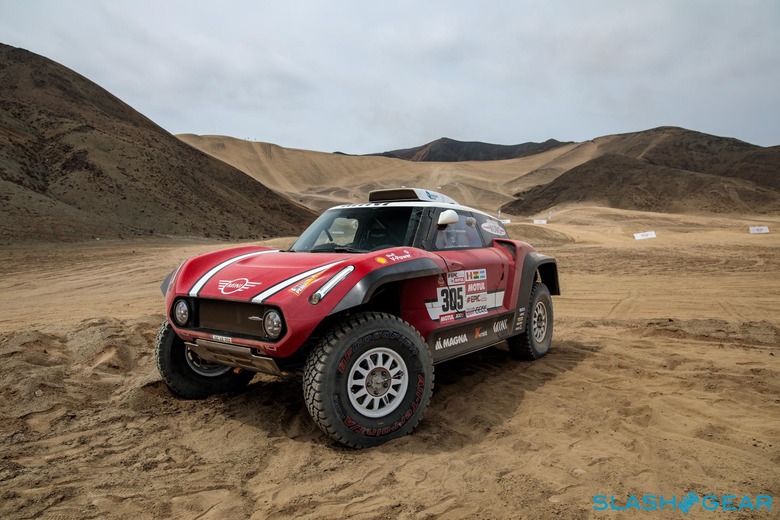
The X-RAID team would go on to win in in the 2012, 2013, 2014, and 2015 Dakar Rally with the MINI All 4 Racing. Come 2017, MINI introduced the MINI John Cooper Works Rally, building upon the lessons learned from the previous car. For this year, X-RAID built an all-new MINI John Cooper Works Buggy from the ground-up.
It's not as easy as it sounds. According to the rally's strict rules, the cars' engines must be from a series production vehicle with more than 2,500 units produced per year. The engine block, crankshaft, connecting rods, pistons, valve train & connected pulleys, and cylinder heads – as complete units, including the valves, camshafts, etc. – must be the same as the production cars, too. For BMW, this means using the TwinPower turbo six-cylinder diesel engine, with its 340 hp at 3250 rpm, and 800 Nm of torque at 1,850 rpm.
Even with that challenge, X-RAID has been hugely successful. In total, it's responsible for four Dakar wins, 54 stage wins, 14 drivers/co-drivers and 80 supporting team members. For 2018, it transported no less than 500 tires – including rims – along with 40 tons of other equipment through the race. Competing in the Dakar is no small feat, mechanically or logistically.
After arriving in Lima on Wednesday, we traveled an hour south to an empty section of the desert for the team shakedown. MINI had invited a handful of media from around the globe to come and experience Dakar, as well as local MINI enthusiasts from around Lima. Its test grounds were made up of several acres of hard packed gravel, mud, and sand: perfect for testing the all-new Buggy. The teams were able to quickly cover about 6,000 kilometers and gather plenty of valuable data. For Bryce and Pete, meanwhile, this would actually be their first experience with the Buggy. Once their test sessions were over, it was time for some fun.
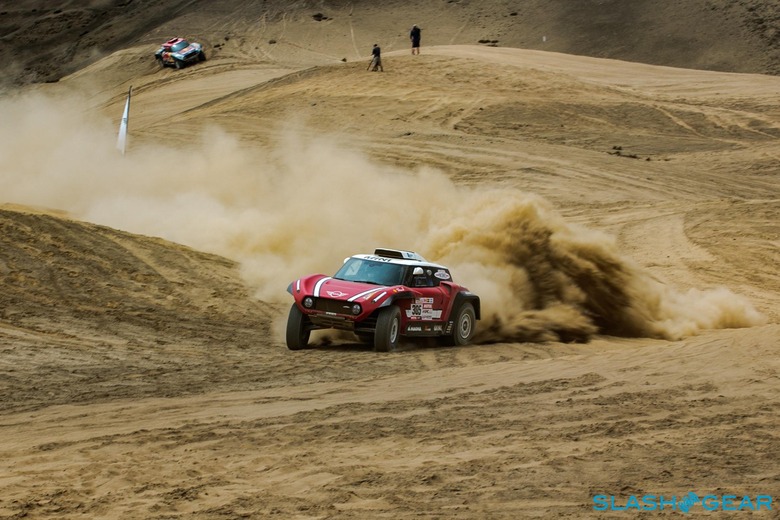
After suiting up, and being shoehorned into the tiny cockpit, it was time for some hot laps with Bryce at the wheel. The MINI's cabins are, as the name implies, close quarters. Pretty much every available inch is used for storage or a necessary gadget.
We rolled out of the staging pit, launched over the hill, and onto the gravel. Bryce expertly drove through the twisty roads, their loose surfaces scattering as we reached speeds around 160 km/h (99 mph). Despite the conditions outside, the buggy's interior was surprisingly comfortable. MINI seals it from the ever-present dust, while the air conditioning is a hard-working essential feature. The only noise, indeed, was the faint sound of the diesel engine and the suspension churning away.
Finally, we reached the sand, and that's when the real fun started. By then I was smiling ear-to-ear, and Bryce was pushing the buggy harder and harder. Climbing a steep hill with ease, we were treated to a vista of rolling dunes to explore, the landscape seeming to go on forever. Never one to shy from a challenge, Bryce attacked them from all angles, and the MINI didn't hesitate. At one point we even passed one of the John Cooper Works Rally's in the dunes.
After half an hour or so, it was time to head back down the hill. I didn't know what to expect but, looking forward, all I could see was the ground quickly approaching. Somehow the suspension absorbed nearly every bump, though, and we made it down the hill effortlessly and back into the paddock.
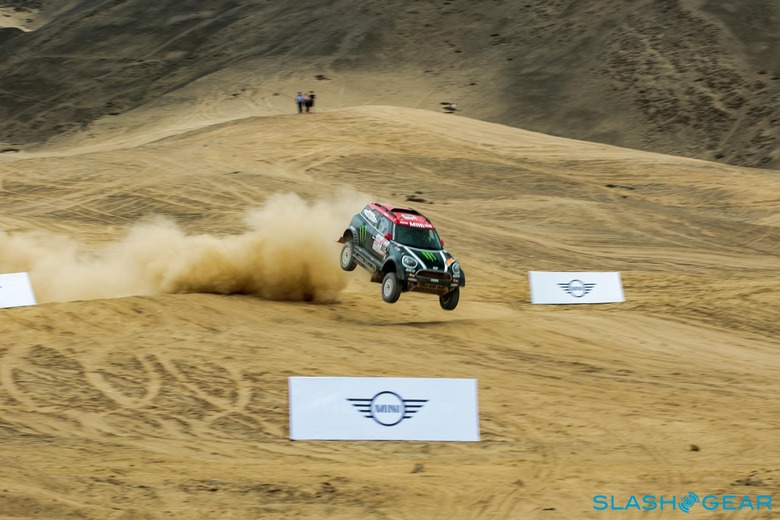
Much as in other motorsports, there's a cat and mouse chase between the rule-makers and the car designers. The current buggy design became necessary due to the restrictions that the race organizers have placed on the astonishingly successful four-wheel drive cars. In contrast, the rear-wheel drive buggy is allowed a significant weight advantage which, in testing, showed an advantage of three-seconds per kilometer. It also uses larger tires, which it can inflate and deflate remotely from inside the car, and has 460mm of suspension travel vs. 250mm. There are also significantly fewer moving pieces to break, as the engine is directly attached to the transmission and the axels are mounted directly to that. There are no transfer cases or front differential to worry about: in race conditions, the fewer things to maintain, the better.
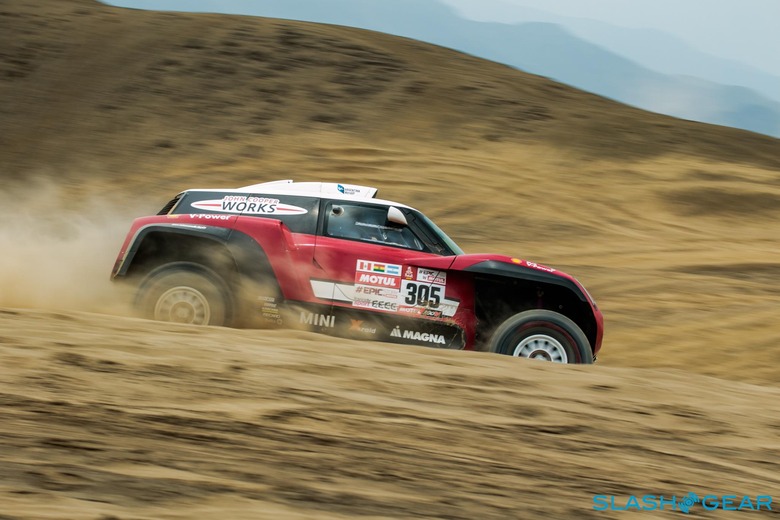
Thursday dawned, and it was time to visit the start point to experience the vehicle scrutineering. The organizers of the Dakar have a stringent set of rules, and it's a complex process that digs into all of the navigation gear as well as the vehicle specifications such as weight and ride height. While the cars were being checked over, the teams busied themselves with interviews, meeting the locals, and signing autographs.
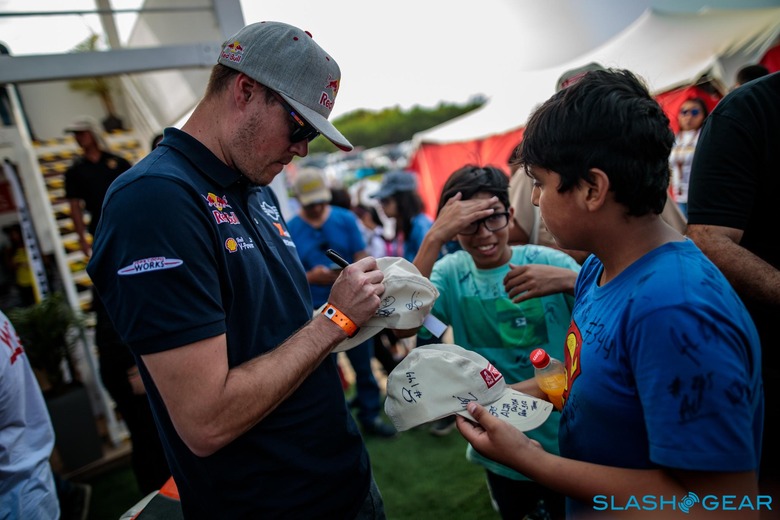
After that, it was time to explore Lima and its beautiful neighborhoods. There's such a huge variety of influences in the city, ranging from Spanish, Italian, French and many others. The architecture is just as diverse as the people. I felt very safe – though, following oft-repeated advice, I avoided all the street food and drinks since I didn't want to get sick. The influence of the church can be seen on every block; it doesn't take many steps before you stumble on catacombs filled with the bones of those who have passed. There are so many vibrant buildings with lots of bright yellows and pastels. The ocean is never too far, and some of the nicest neighborhoods have great panoramic views.
On Friday we headed three hours south to Pisco and the first bivouac. It was also our turn to drive, though a more production-like MINI Countryman rather than a buggy. Even without the race-tuned hardware to think about, much less the dunes, driving here is a challenge. The local roads and highways feel like a free-for-all, with little in the way of organization and traffic laws treated more like vague – and optional – guidelines. It was a relief to escape the city and find the roads opening up to scenery both vast and varied.
The highways were well maintained and surprisingly easy to navigate, though the wind and dust bordered on the overwhelming once we reached our destination. The locals had all received word of the location as well, and there were already hundreds if not thousands of people outside the gates, waiting to catch a glimpse of the teams. Many had brought their own off-road vehicles and were ripping around the parking lot.
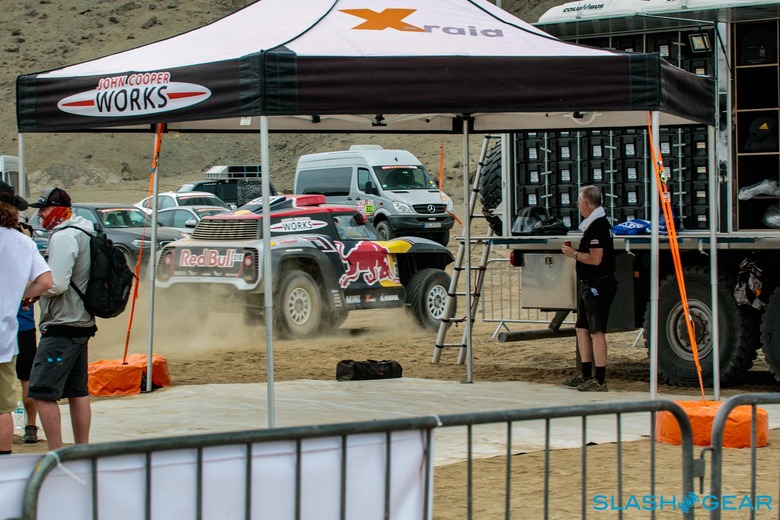
Security was tight, and we quickly parked our MINIs and made our way past the gates into the X-RAID section of the camp. Somehow, even despite our two hour head start, the crew had made the journey much quicker, arriving well before us and establishing the camp. With the support trucks a protective horseshoe around the MINIs staged inside, it's felt like a thoroughly modern campground. Each car has its own support truck, engineer, and mechanics. There was a total of 150 staff to support the X-RAID effort.
The team mechanics can only work on their car in the bivouac. Even so, they spend as many as four hours each night rebuilding the cars, regardless of the number of kilometers that were covered that day. That's on top of many hours abusing each vehicle in test sessions, to get an idea of how long each part will last. The lifespan and install dates of those parts are closely tracked: everything known to be particularly prone to wear is preemptively replaced, while the torque is verified on every single bolt. The Rally was designed to be taken apart in about half an hour, while the Buggy takes a matter of minutes.
Even so, the teams worked through the night to make sure the MINIs would be prepared for the first full stage of the race, a loop around Pisco that was 90-piste off-piste. The sound of the air compressors and generators helped lull me to sleep in my tent. We woke up at 4:30 AM to be on the road by 5:00 AM to make it to the first checkpoint.
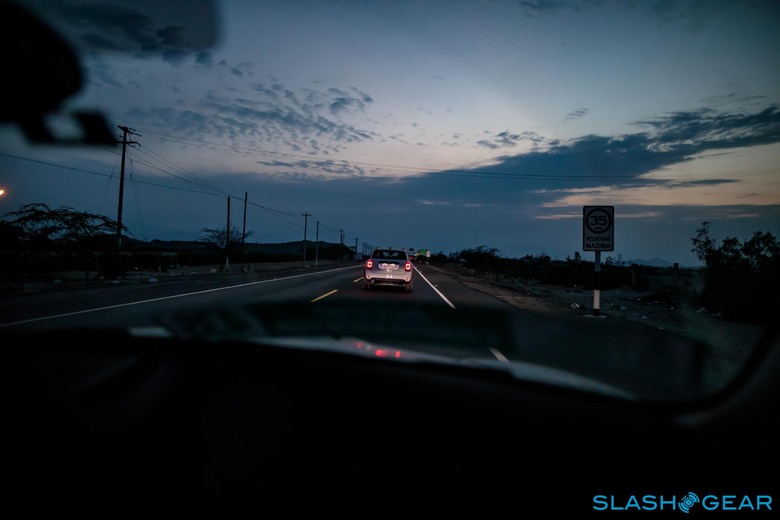
Driving south through tiny towns patrolled by packs of wild dogs, it was eye-opening to see how people in the desert live. Most of the structures are crudely constructed of plywood and tarps, but even they dwindled in number as we reached the edges of civilization and one of the checkpoints. The land was mostly flat, the sand having the consistency of talcum powder. Only a strip of red security tape, delineating the edge of the track, shows the hand of human influence on the untamed terrain. Only the weather is truly in control of what happens here, scattering the ubiquitous sand across the rolling hills in the distance, soon to be disturbed as the teams passed through the checkpoint.
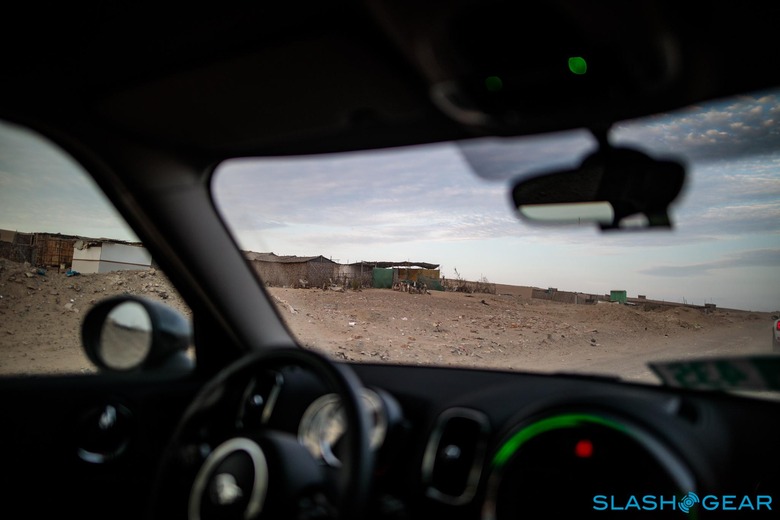
The cars would disappear just as quickly as they appeared, on a mission to find their waypoints and get back to the bivouac as quickly as possible. This would not be the case, however, for the American team. A few kilometers before the checkpoint, Bryce – a very successful trophy truck driver – underestimated both the car and the terrain. A bump that his trophy truck could easily handle would spell the end of their journey. The MINI rear suspension unloaded after hitting a double bump, forcing the nose of the car into the ground and sending it flipping forward. Both Bryce and Pete made it safe from the truck, but that was the end of their Dakar dreams. It left six other MINIs still in contention, two of which would end up crashing into each other in the dunes just outside the checkpoint.
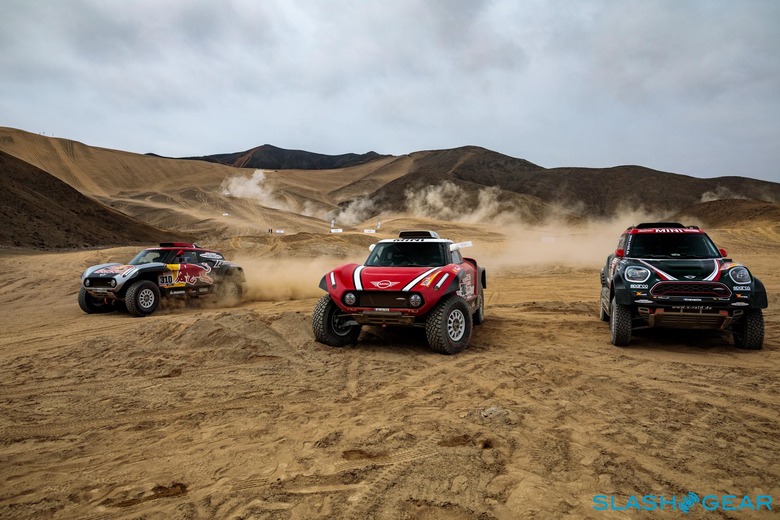
It's an occupational hazard on a race like Dakar, and it underscores just how much rests on the shoulders of the driver and navigator. When something goes wrong while they're out on the course, they're the only people who can work on the car. Far from the cluster of mechanics and engineers in the bivouac, it's an altogether more ad-hoc business. The cars have built-in air jacks to raise them off the ground when necessary; they carry 2-3 spare wheels depending on the vehicle, and a few small spare parts. When there's significant damage, they need to wait for the race truck that's also entered into the competition: it carries enough parts to build a whole new car. In a worst-case scenario, another car is able to tow the damaged vehicle to the final time control station, and into the bivouac.
Testing that maintenance training is a given, too. During the marathon stages, the driver and navigator must spend one night without their teams and mechanics, servicing their vehicles on their own. Only what the car itself can carry – including tires – can be used. Even in the regular stages, there's no direct communication allowed between the vehicles and the teams while out in the field. Instead, it's down to the navigator to provide feedback for the driver, calling out not only the upcoming turns but warning of treacherous terrain and other dangers along the way.
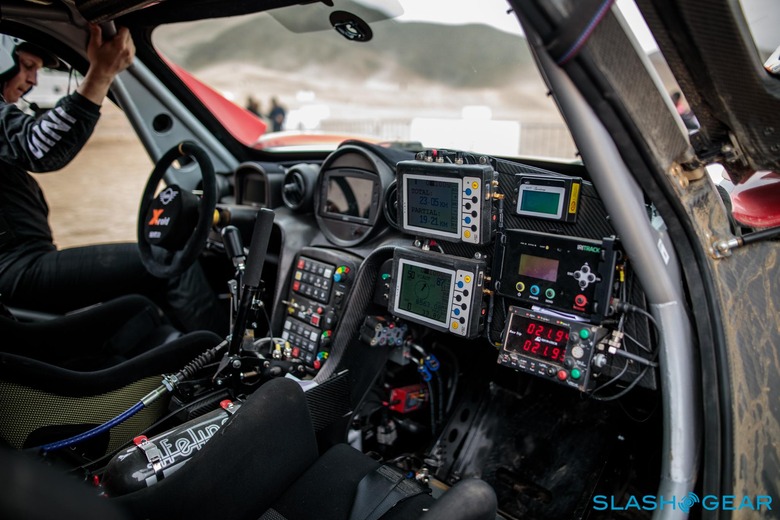
They do that with a combination of old and new tech. The navigator's dashboard is filled with gadgetry, from a Tripmaster that logs current and average speed and distance, an Iritrack emergency two-way data and voice communications device that can report a crash back to the race organizers, to a Sentinel that warns the navigator if they're about to be overtaken by a faster vehicle. Up to two ERTF GPS systems are used for stage guidance, giving a rough indication of where the next waypoint is and then automatically validating that the vehicle has reached it. All of that, though, pales in comparison to the navigator's road book.
The road book is the most critical item in the vehicle, and arguably the one thing drivers in the original Dakar race would recognize. It lists distance, the compass heading, and a drawing of where each waypoint is. The drawings are not to scale, naturally, and it's up to the navigator to interpret the terrain in front of them. Even the English versions of the book contain a confusing combination of French abbreviations, often marked up with handwritten alterations from the organizers, and then worked over again with each navigator's own unique coding.
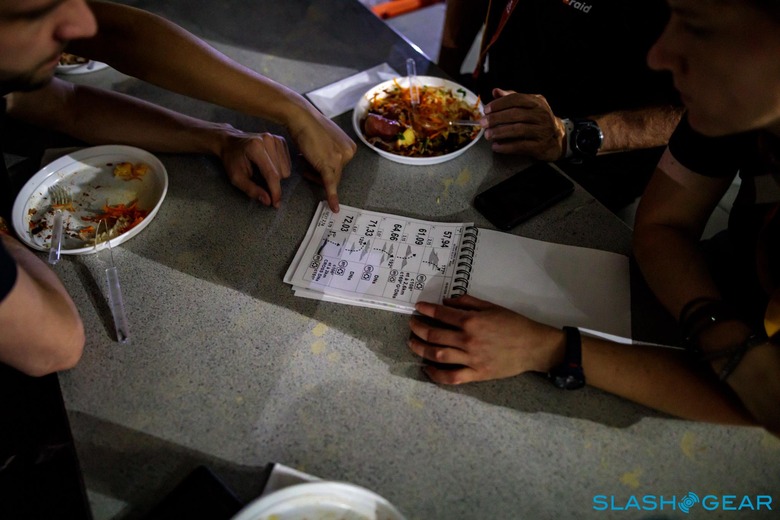
After our journey to the first checkpoint was over, it was time to make the drive back to Lima. It was an incredible journey and the time spent with the teams learning about what Dakar is all about was incredible. I have so much more respect for the teams and the drivers that contest this incredibly grueling test of strength. One of the biggest standouts for me was the Malle Moto, which I quickly came to realize encapsulated the real spirit of Dakar.
These motorbike riders are all on their own: everything they need is stored and transported in a small box. The Dakar guidebook describes Malle Moto as a "challenge created for Bike and Quad Riders without ANY KIND OF SERVICE." Sure enough, the competitors have to do everything themselves. They ride their bikes, navigate, service and prepare everything, and there is no outside assistance throughout the event only from their fellow riders. You'd be hard-pressed to find another group of such genuinely incredibly-talented individuals, willing to risk it all to finish one of the most arduous races in existence.
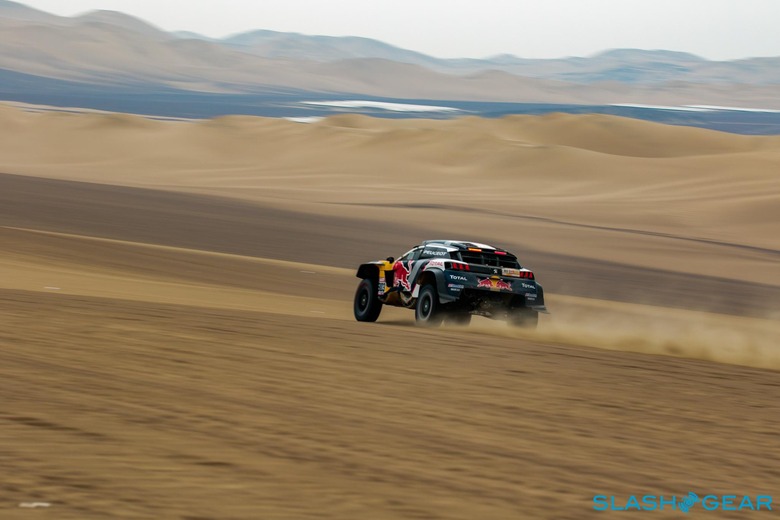
I left Peru and Dakar with a much more significant appreciation of the country and the event. The people of Peru are all so hardworking and welcoming, while the landscape is beautiful and the food delicious. The Dakar competitors are some of the greatest and inspiring athletes that I've ever had the chance to meet. I look forward to going back again someday and perhaps spending more time in South America and following along the Dakar.
Four of the seven X-RAID MINI cars would go on to finish the Dakar in Cordoba, Argentina. The John Cooper Works Rally of Juba Przygonski & Tom Colsoul would finish in 5th, Boris Garafulic & Filipe Palmeiro 13th, Orlando Terranova & Bernardo Graue 20th and the John Copper Works Buggy driven by Mikko Hirvonen & Andreas Schulz in 19th.

